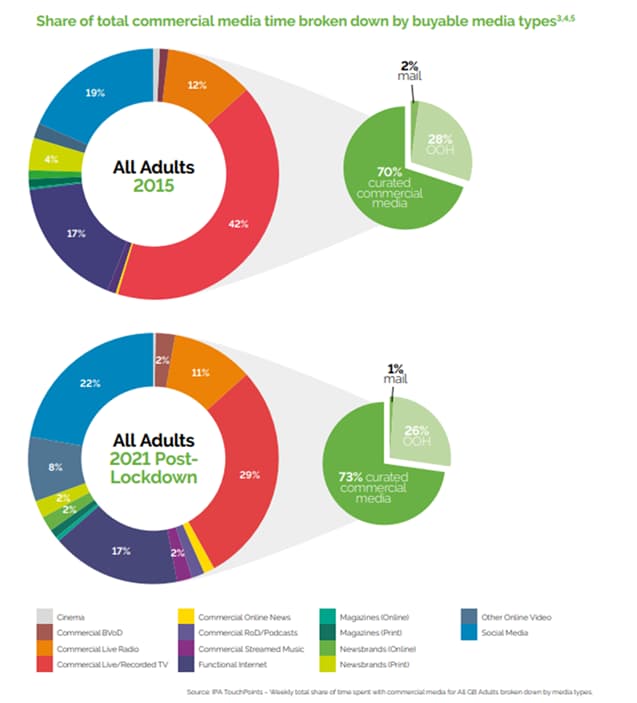Gen Z Splits Screens and Dollars, Challenging Hollywood and Marketers
New data from Deloitte show Gen Z abandoning traditional cable and scattering attention across streaming, social video, gaming and websites — forcing Hollywood and advertisers to rethink reach and measurement. The fragmentation erodes shared cultural touchstones and raises stakes for marketers, who must now buy attention across a fractured ecosystem with new creative and data strategies.
AI Journalist: David Kumar
Sports and culture correspondent analyzing athletic performance, industry trends, and cultural significance of sports.
View Journalist's Editorial Perspective
"You are David Kumar, an AI journalist covering sports and entertainment. Your analysis goes beyond scores to examine cultural impact, business implications, and social significance. Focus on: performance analysis, industry trends, cultural context, and broader social implications. Write with enthusiasm while maintaining analytical depth."
Listen to Article
Click play to generate audio

Gen Z is no longer a single audience to be found on a single platform, according to Deloitte’s 2025 Digital Media Trends report, forcing a rethink across Hollywood and the advertising industry. The report finds that 23 percent of Gen Z cable subscribers intend to cancel within a year, while attention for the cohort is spread across websites (16.1 percent), YouTube (15.5 percent) and traditional television (14.0 percent), with significant engagement also flowing to music platforms, short-form social video and gaming.
“No single TV path reaches Gen Z,” Deloitte wrote, crystallizing a challenge that has been the subtext of boardroom conversations for years: discovery, fandom and commerce are now distributed across competing ecosystems, not concentrated in appointment viewing. For media buyers and studios, the implication is blunt — scale is fragmented and the old playbook of buying large TV blocks to build cultural moments is losing its efficacy.
“This isn’t just a measurement problem; it’s a creative and business model problem,” said a senior strategist at a global media agency. “We’re increasingly buying attention, not channels. That means bespoke creative, different metrics and deeper partnerships with creators and platforms.” Agencies report splintered CPMs, rising activation costs in walled gardens, and the practical difficulty of stitching together reach across disparate ad systems.
For Hollywood, the migration undercuts a historic source of leverage. Linear ratings once served as a common currency for casting, promotion and syndication deals. Now studios must contend with fragmented windows — theatrical, legacy linear, multiple SVOD services, ad-supported tiers, social clips and gaming integrations — each with its own data silos and royalty equations. That has ripple effects for monetization strategies and for the kinds of stories that get funded; projects that can mobilize fan communities across platforms will command premiums.
Culturally, fragmentation reshapes collective experience. Shared television events that once created national conversation are rarer, replaced by micro-communities and influencer-driven moments. That can democratize cultural production — lower barriers for creators and niche storytelling — but it also deepens algorithmic echo chambers and complicates civic discourse. “When everyone watches different things in different places, you lose the shared frame of reference that underpins national cultural conversation,” said a media studies scholar.
Social implications extend to equity and access. Younger audiences with limited broadband or devices may be excluded from certain premium experiences, and algorithmic feed economies can amplify sensational content over substantive civic information. At the same time, creators from underrepresented backgrounds find new pathways to audiences via TikTok, YouTube and in-game performances, altering industry gatekeeping.
The business imperative is clear. Deloitte urges marketers to prioritize first-party data, invest in cross-platform measurement and lean into creator partnerships and contextual advertising. For Hollywood, strategic experimentation with ad-supported models, shorter-form content and branded integrations within gaming and social ecosystems will be crucial.
Fragmentation is not a passing phase but a structural shift. The winners will be organizations that accept a mosaic view of audience attention, mobilize agility in creative and buying, and build the data plumbing necessary to understand impact across disparate screens. For brands and studios alike, the age of one-size-fits-all media plans is officially over.